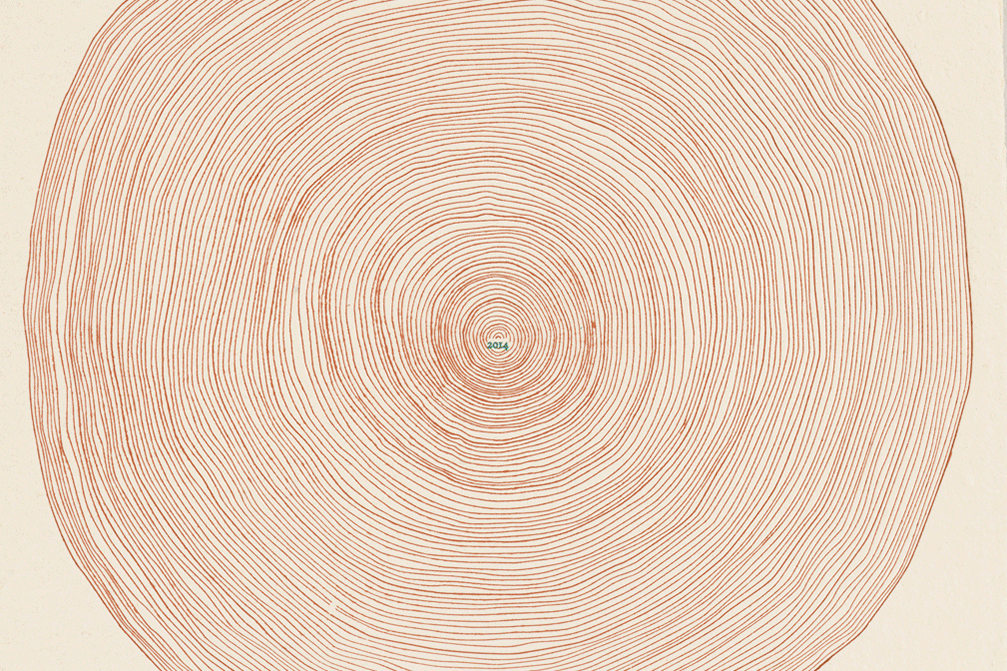
To Bough and To Bend
08.30.22 – 03.26.23
Curated by Bridge Projects, and on view from August 30, 2022 to March 26, 2023 at:
THE FREDERICK R. WEISMAN MUSEUM OF ART
Pepperdine University
24255 Pacific Coast Highway
Malibu, CA 90263
“Tis the gift to be simple, ‘tis the gift to be free,
‘Tis the gift to come down where we ought to be,
And when we find ourselves in the place just right,
‘Twill be in the valley of love and delight.
When true simplicity is gain’d,
To bow and to bend we will not be asham’d,
To turn, turn will be our delight,
Till by turning, turning we come round right.”
“Simple Gifts” is the Shaker song from which To Bough and To Bend borrows its title. Written by Joseph Brackett in 1848, the song was both an instruction for social dance and also for how to live a life of simplicity. Inspired by those ideas, the curators of this exhibition ask, “Do trees not also teach us how to embody this humble posture as they bend their boughs to greet us?”
As they do in Shaker spirituality, trees also feature prominently in many of the world’s religions. Ancient history recounts how their shade and branches have been sites of contemplation, suffering, and renewal. The Bodhi Tree is said to be the site of Siddhārtha Gautama’s awakening as the Buddha. The Tree of Life is found in both the beginning of the Jewish Tanakh and in the last book of the Christian Scriptures. Ancient Chinook prayers address God as the “Maker of Trees.” Trees are rightly called the “architecture of imagination,” writes the novelist Richard Powers.
Today, trees still speak: blunt stumps communicate deforestation while charred limbs speak of Los Angeles fires started by our own hands—or our negligence. New discoveries of communicating root systems speak to a tangled web of connections just below the surface of the visible world, just as LA’s iconic—and imported—palms evoke the vast impacts of our colonial past.
To Bough and To Bend explores these ecological issues and looks to religious and historical art practices to guide us back into fellowship with these old friends and the living world we share.
The first iteration of To Bough and To Bend opened at Bridge Project’s Hollywood gallery in March 2020, on the eve of the COVID pandemic lockdown. Given the circumstances, the exhibition was seen by very few visitors. “A tree can be only as strong as the forest that surrounds it,” writes Peter Wohlleben in The Hidden Life of Trees. In the solitude of our isolated quarantines, this bore itself out as a human reality as well. The Bridge Projects curatorial team, consisting of Cara Lewis, Alejandro Figueredo Diaz-Perera, Meaghan Ritchey, Vicki Smith, and Linnea Spransy, adds, “We are deeply grateful to the Weisman Museum for giving the exhibition a second life. It is our sincere hope that, like a forest canopy on a hot day, To Bough and To Bend will be a shared space of reflection and rest.”
The Frederick R. Weisman Museum of Art at Pepperdine University was dedicated in September 1992, and since then, has showcased modern and contemporary art by internationally recognized artists, with a focus on the art of California. Past exhibitions include Claes Oldenburg: Drawings (2004), Chihuly Los Angeles (2005), Jim Dine: Some Drawings (2007), Mercedes Matter: A Retrospective Exhibition (2010), Roy Lichtenstein: In Process (2011), Thiebaud: Works on Paper (2014), Andy Warhol: Life and Legends (2016), Larry Bell: Pacific Red (2017), Richard Diebenkorn: Beginnings, 1942–1955 (2019), Rodin and Women: Muses, Sirens, Lovers (2020), and The Cultivators: Highlights from the Kinsey African American Art and History Collection, in addition to numerous exhibitions drawn from the collection of the Frederick R. Weisman Foundation.
Located on Pepperdine’s Malibu campus, the museum is open Tuesday–Sunday, 11 a.m. to 5 p.m., and is closed on Mondays and major holidays. Admission is always free and advance reservations are no longer required.
After three years, Bridge Projects closed its brick and mortar space in Hollywood on July 30, 2022. Through collaborations with institutions like the Weisman Museum of Art, Bridge is hopeful that the work curating for and convening audiences at the intersection of contemporary art, spirituality, and religious traditions will continue to take root and bear fruit.
Exhibition view at Weisman Museum, Photo: Ian Byers-Gamber
Exhibition view at Weisman Museum, Photo: Ian Byers-Gamber
Exhibition view at Weisman Museum, Photo: Ian Byers-Gamber
Exhibition view at Weisman Museum, Photo: Ian Byers-Gamber
Exhibition view at Weisman Museum, Photo: Ian Byers-Gamber
Exhibition view at Weisman Museum, Photo: Ian Byers-Gamber
Exhibition view at Weisman Museum, Photo: Ian Byers-Gamber
Exhibition view at Weisman Museum, Photo: Ian Byers-Gamber
Exhibition view at Weisman Museum, Photo: Ian Byers-Gamber
Exhibition view at Weisman Museum, Photo: Ian Byers-Gamber
Exhibition view at Weisman Museum, Photo: Ian Byers-Gamber
Exhibition view at Weisman Museum, Photo: Ian Byers-Gamber
Exhibition view at Weisman Museum, Photo: Ian Byers-Gamber
Sebastian, 2015
Christmas trees, palm branches, seed pods, sunflower seeds, coconut, acorns, avocado pit, corn husk, pomegranate skin, leaves, pine cone, twine, and raffia, 92 x 31 x 38 inches
Wood No. 11 DB (view 1), 1999
cedar, 28 x 39 x 40 inches
Rimon (Pomegranate), 2010
c-print, mounted and framed, 47 1/4 x 50 3/4 inches
Stacka Hydnum Pyrenula Macrospora, 2012
glazed porcelain, 16 x 7 x 7 inches, ceramic, 25 x 14 x 14 inches, container
Bamboo Hood, 2019
archival pigment prints, artist frames, UV laminate, 30 3/8 x 42 1/4 x 3 1/2 inches
Bitsawit Mariam, 2018
archival photographic print, 50 x 37 ½ inches
Untitled diptych (Body and palm frond on blue), 2020
pigment prints, 20 x 26 3/5 inches each, edition 1 of 3
